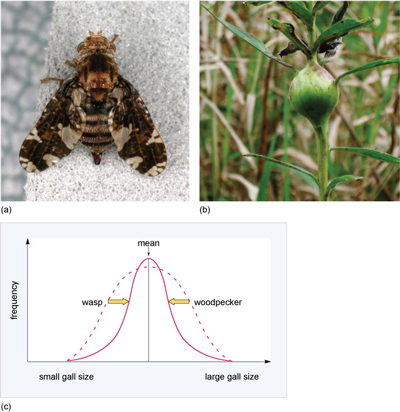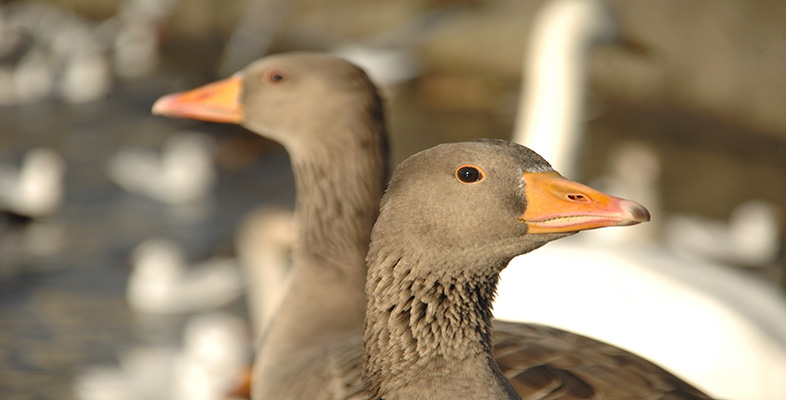3.2 Stabilising selection
Stabilising selection occurs where there is an optimal value for the trait of interest. This means that selection acts against both extreme phenotypes and favours intermediate variants which have the highest fitness (survive to reproduce). For example, goldenrod gall flies (Eurosta solidaginis, Figure 14a) lay their eggs individually in developing shoots of the tall goldenrod plant (Solidago sp.). The fly larva that hatches from the egg makes a chemical that causes the plant tissue to swell around it, and the result is a mass of plant tissue called a gall (Figure 14b), which serves as a home for the larva. Downy woodpeckers attack large galls and eat the gall fly larva. Parasitic wasps lay eggs inside small galls and the wasp larvae that hatch from the eggs eat the gall fly larva when it hatches. Only galls of intermediate size remain intact because the wall of the gall is too thick for the ovipositor of a parasitic wasp to penetrate, and the size of the gall and hence the larva within makes it less attractive to woodpeckers than a larger gall containing a larger larva and hence a larger meal. So, selection pressures act on gall size and only larvae in galls of intermediate size survive (Figure 14c).

Under stabilising selection, what happens to the amount of variation in the size of galls in the population?
The amount of variation decreases; that is, there is a decrease in the range of gall sizes.
